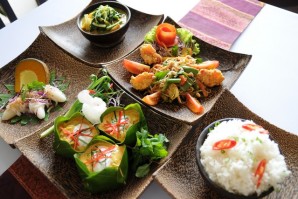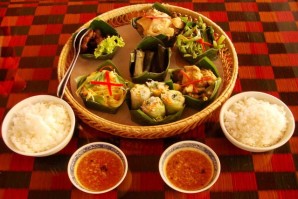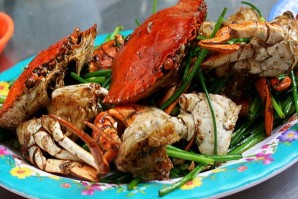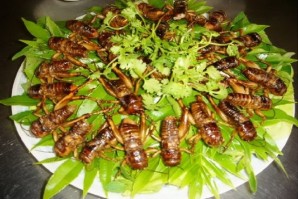Cambodian cuisine is one of the oldest living cuisines in the world—but it is not just the age that makes this Southeast Asian cuisine all sorts of wonderful. Two close cousins of Cambodian cuisine, Thai and Vietnamese, have long taken the world by storm, and many who have sampled traditional Cambodian fare believe that Cambodian cuisine should not stay in the shadows anymore.
There are several key characteristics that make Cambodian cuisine highly appealing: first, the emphasis on simplicity and freshness. Most Cambodian dishes feature seasonal and regional ingredients that ensure flavorful freshness every time. Second, Cambodian cuisine uses spices and herbs in an understated and elegant way. Every bite is an orchestra-like combination of contrasting and complementing textures, temperatures, and flavors. Third, dishes are often presented in an aesthetic unique to Cambodia.
They say that a big part of a country’s soul is manifested in its cuisine. Once you try Cambodian food, you are one step ahead in understanding the mysterious and enchanting culture of this Southeast Asian destination.
Must-try dishes
Start your day in Cambodia right by partaking of a hearty breakfast of bai sach chrouk. Essentially, this dish consists of pork and rice, two simple ingredients that make a plateful of awesome. The pork, thinly sliced by a cook’s deft hands and extremely sharp knife, is cooked over warm coals, imparting a smoky and sweet flavor. Bai sach chrouk is usually sold literally everywhere in Cambodia, and every cook or vendor has his or her own special recipe. Or you can start with the nom banh chok (the English translation is just “Khmer noodles,” no kidding), a dish made of rice noodles with a medley of green beans, bean sprouts, turmeric, kaffir lime, cucumbers, and other excitingly unique Cambodian ingredients.
For lunch, you can try one of the more popular Cambodian dishes, amok. This dish is usually prepared with fish livened up with slok ngor, fresh coconut milk, and kroeung (the Cambodian version of curry paste). The Khmer red curry is also a must try—it is very similar to the Thai red curry, but perfect for those not wishing to have their tongues burned off. The flavors of meat (fish, chciekn, or beef), potatoes, coconut milk, lemongrass, green beans, and kroeung combine harmoniously, and you will be able to enjoy every subtle flavor note without the overpowering heat of chili.
If seafood is right up your alley, then you should make sure to try kdam chaa (fried crab) and ang dtray-meuk (grilled suqid), dishes often served in seaside areas such as Kep and Sihanoukville. Kdam chaa is often livened up by Kampot pepper, one of the most popular culinary exports of Cambodia. Ang dtray-meuk, on the other hand, is flavoured with Cambodian fish sauce or lime juice (or a combination of both), and then barbecued over charcoal and erved with a sauce of local chillies, lime juice, garlic, sugar, and Cambodian fish sauce.
Feeling more adventurous? Try tarantulas or the red tree ants cooked with holy basil and beef. These dishes are exactly what it says on the tin, and they always make for good stories once you get back home.
TNK Travel Team







